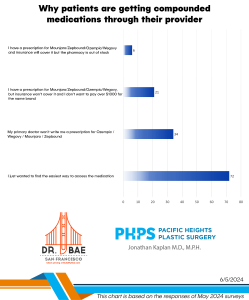
Doctors-in-training spend the first 6 months of medical school learning about anatomy. Dissecting this tissue from that tissue on people that were generous enough to donate their bodies to science. However, doctors must recognize that our patients did not attend medical school. So there’s a knowledge gap. And to bridge that gap, we must ensure we’re educating patients adequately so we’re all using the same terminology. Confusion on our “words” will lead to an unhappy patient, especially when it comes to anatomy.
Our words count when it comes to anatomy
The first example that comes to mind when discussing potentially confusing anatomical terms is when doctors refer to abdominal quadrants. It’s easy to tell the patient their appendectomy scar will be in the right lower quadrant. Obviously that may not mean much to a patient. Especially unique about the abdomen is how often patients refer to an organ (the stomach) when talking about their abdomen. “You’re operating on my stomach?” while pointing to the abdomen.
It’s important the doctor doesn’t propagate any erroneous terminology just for the sake of the patient’s understanding. These are times when it’s necessary to educate the patient and bring them over to the doctor’s way of thinking, ie correctly referencing the abdomen and not the stomach when discussing abdominal procedures.
Another example in the cosmetic realm is the reference to flanks vs hips vs thighs. Many patients will use these interchangeably. Maybe even some doctors. But if you’re telling a patient you’re performing liposuction to the flanks and they’re expecting slimmer hips postoperatively, you’ll have an angry patient on your hands.
Video description of the hips vs flanks vs thighs
Patients seems to have varying opinions on what the “smile lines” are when talking about injectables like Botox, Xeomin or fillers. I think most people correctly refer to the smile lines as the lines that extend from the nostrils down to the corners of the mouth. These are also referred to as the “parentheses lines” or nasolabial grooves. These areas are treated with fillers. However, some patients refer to the lines around the eyes as smile lines because they’re produced when a patient smiles. Those lines are more appropriately referred to as the “crow’s feet.” It’s so important that this distinction is made because “smile lines” around the eyes (crow’s feet) are treated with Botox or Xeomin, not the fillers typically reserved for the nasolabial grooves smile lines.
So choose your words carefully! To check pricing on any of these procedures from a doctor near you, click here.
Click here for the original blog post written by Dr. Kaplan for BuildMyBod.




